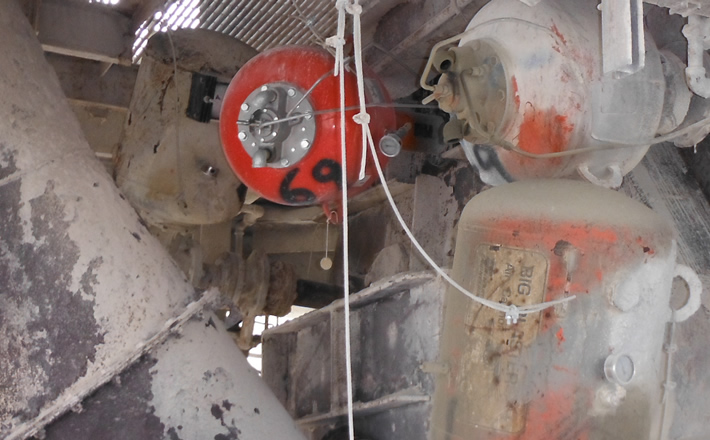It is bad practice for a belt manufacturer to emboss a logo into the carrying side of a belt because material can become entrapped in the logo.

Julie Derick
Receptionist
28 years with Martin
Favorite thing about Martin:
My co-workers
Something I want the
customer to know:
That Martin has been a wonderful "constant" most of my adult life.
Favorite thing about my job:
Working with people (customers on the phone, greeting people at the front desk, etc.)
Product Line:
Air Cannons
Industry:
Cement

The plant was incurring unscheduled outages due to buildup/blockages, costing tens of thousands of dollars. In an attempt to improve productivity, the plant reached out to Martin Engineering to help increase efficiency and eliminate emergency outages.
Continue reading...
Banging your head against a wall burns 150 calories an hour.

Neponset Picnic Days
Martin Engineering participated in Neponset Picnic Days, the annual summer festival that takes place where Martin Engineering is headquartered, by entering in the parade and handing out Martin goodies.
|

David Ruggio
Product Specialist - Vibration Products
38 years industry experience
6 STEPS TO A SUCCESSFUL VIBRATOR INSTALLATION
- Data collection
- Force calculation
- Vibrator selection
- Location on the structure
- Installation
- Operation
The first step, Data Collection, is the foundation for the remaining five steps. The Application Data Sheet covers all the questions regarding the applications such as structure dimensions, material characteristics, power requirements etc.
The second step, Force Calculation, can be completed using the Application Data Sheet content and the steps below:
- Calculate the cubic/ft volume of the sloped portion of the bin.
- Multiply the volume by the weight per cubic/ft of the material to get the total weight of material in the sloped portion.
- Divide the weight by 15 for dry materials and 20 for wet materials to arrive at the amount of centrifugal force required to move the material.
To continue learning from our experts,
be sure to SIGN UP! to continue receiving this newsletter
F4 refers to Foundations™ 4 - the 4th edition of Martin's book on improving belt conveyors and controlling fugitive material. We will break up the book into short, easy-to-read articles for your convenience.
DUST-COLLECTION SYSTEMS

Mechanical dust collection systems are installed to pull dustbearing air away from a dust source, such as a conveyor loading zone, separate the dust from the air and exhaust the cleaned air. A typical dustcollection system consists of four major components:
- Exhaust hood(s) or pickup(s) to capture airborne dust at the source(s).
- Ductwork to transport the captured air/dust mixture to a collector.
- Collector, filter, or separation device to remove dust from the air.
- Fan and motor to provide the necessary suction volume and energy.
Download full article
External Wearliner
Install and adjust from outside the chute

- Simplifies wear liner inspection & replacement
- Eliminates need for confined space entry
- Improves skirtboard sealing system performance
- Chute wall can be trimmed to avoid material buildup
Discover More
What do YOU want to read?
|